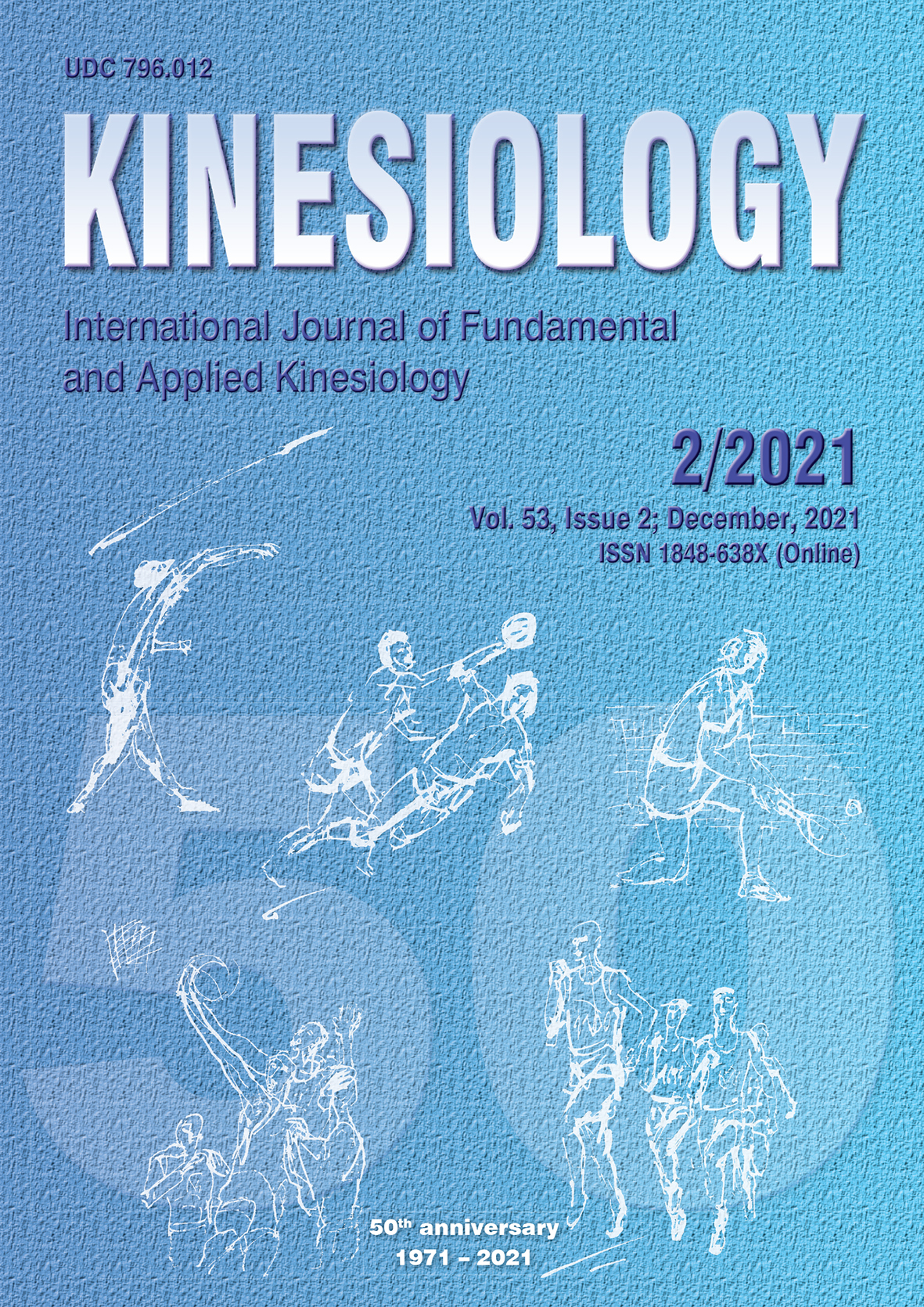THE ACUTE EFFECTS OF DIFFERENT HIGH-INTENSITY CONDITIONING ACTIVITIES ON SPRINT PERFORMANCE DIFFER BETWEEN SPRINTERS OF DIFFERENT STRENGTH AND POWER CHARACTERISTICS
Abstract
The purpose of the present study was to examine the effect of different conditioning activities (CAs) on short-term increase in sprint performance. In twelve male sprinters (21.1±2.6 years, 100 m performance: 11.5±0.6 s) their body composition, half squat maximum strength, 100 m sprinting and countermovement jump performances were evaluated. The performance of a 50 m sprint (splits at 10 m, 30 m and 50 m) was evaluated before and 5, 10 and 15 min after four postactivation performance enhancement CAs on different occasions: [1] 3 sets x 4 s maximum isometric half squat (IHF), [2] 3 sets x 3 consecutive countermovement jumps (cCMJs), [3] 3 repetitions x 30 m overspeed sprinting (OVSP) and [4] dynamic submaximal half squat (2 sets x 2 reps x 90% of 1-RM half squat; HSQ). Significant improvements of sprinting performance were found 10 and 15 min following the cCMJs, OVSP and HSQ’s interventions, in all distances (p<.05; -2.14±1.21% and -3.56±2.47%), without any significant difference between these interventions and time points (p>.05). Significant inter-individual differences were found in the magnitude of sprint performance improvements as well as in the optimal time window (p<.05), with the stronger sprinters responding better after HSQs, while the more powerful sprinters after cCMJs and OVSPs. In conclusion, it seems that cCMJs, OVSP and HSQ can acutely increase sprinting performance after 10 min, but CA’s induced increases in sprinting performance are highly related to the strength and power characteristics of each sprinter.
Key words: postactivation potentiation, postactivation performance enhancement, plyometric exercises, ballistic exercises, overspeed sprinting, isometric exercises
Downloads
Published
Issue
Section
License

This work is licensed under a Creative Commons Attribution-NonCommercial 4.0 International License.
At Faculty of Kinesiology we recognize that access to quality research is vital to the scientific community and beyond. Kinesiology is non-profit journal and all costs of publishing and peer review process are covered by the publisher itself or other funding sources like Ministry of Science and Education of the Republic of Croatia. Full text papers are also available free of charge at http://hrcak.srce.hr/kineziologija. There are no restrictions on self archiving of any form of paper (preprint, postprint and publisher's version).
Articles are distributed under the terms of the CC BY - NC 4.0
Kinesiology does not charge any fees to authors to submit or publish articles in our journal.


